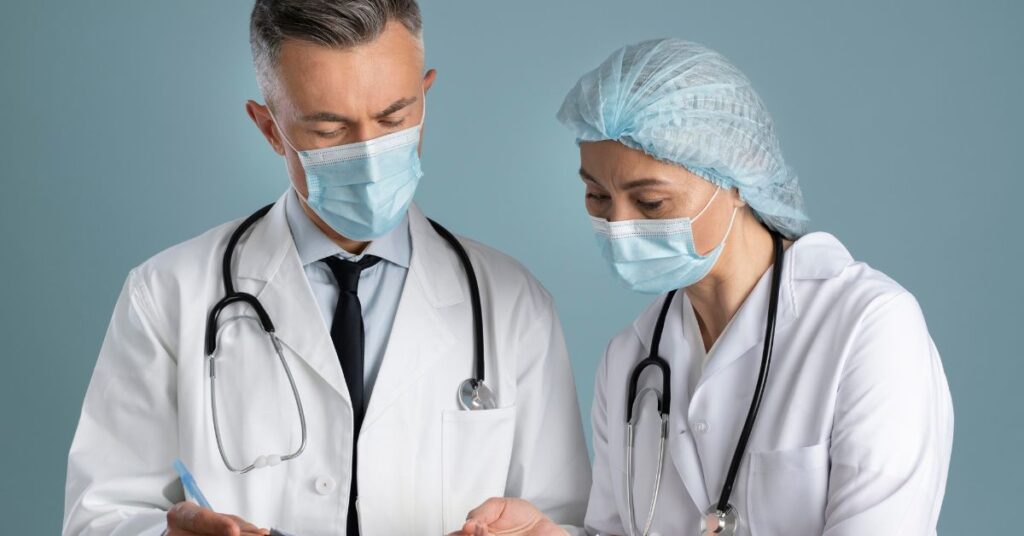In this comprehensive guide, we delve into the core aspects of safety and health inspections, focusing on discerning the truths behind commonly asked questions which of the following statements are true about safety and health inspections? In today’s fast-paced world, ensuring safety and maintaining health standards in workplaces is paramount. Among the many tools available to achieve this, safety and health inspections stand out as essential practices. These inspections serve as a cornerstone in safeguarding the well-being of employees and creating a conducive work environment.
Which Of The Following Statements Are True About Safety And Health Inspections?
A. Safety and health inspections should cover every part of a worksite. ✅
B. Safety and health inspections should not be done sporadically.
C. In-house inspectors should be used for safety and health inspections. ✅
D. Identified hazards should be tracked until they are corrected. ✅
So, The answer is A,C,D
Why Should Regular Health and Safety Inspections Take Place?
Regular health and safety inspections are essential for several reasons:
- Hazard Identification: Inspections help identify potential hazards and risks present in the workplace, ranging from physical dangers like machinery malfunctions to environmental factors like poor ventilation. By systematically assessing the work environment, inspections enable proactive measures to mitigate these risks before they escalate into accidents or injuries.
- Compliance with Regulations: Health and safety regulations, set forth by organizations such as OSHA (Occupational Safety and Health Administration), mandate regular inspections to ensure adherence to legal requirements. Conducting inspections helps organizations demonstrate compliance with these regulations, thereby avoiding potential fines, penalties, and legal liabilities.
- Prevention of Accidents and Injuries: Regular inspections enable the identification and correction of unsafe conditions and practices before they lead to accidents or injuries. By addressing hazards promptly, organizations can create a safer work environment, reducing the likelihood of workplace incidents and promoting employee well-being.
- Cultivation of a Safety Culture: Implementing regular health and safety inspections demonstrates an organization’s commitment to prioritizing the health and well-being of its employees. By involving employees in the inspection process and encouraging proactive hazard reporting, organizations foster a culture of safety where safety becomes ingrained in every aspect of operations.
- Continuous Improvement: Health and safety inspections serve as a proactive tool for continuous improvement. By regularly assessing the effectiveness of existing safety measures and identifying areas for enhancement, organizations can refine their safety protocols, policies, and training programs to adapt to evolving workplace dynamics and emerging risks.
Also Read – Inspections for Safety: A Closer Look at Health and Well-being
What Is The Difference Between Safety Audit and Safety Inspection?
Safety Inspection:
- Purpose: Identifying hazards and risks in the workplace.
- Frequency: Regularly scheduled, proactive assessments.
- Focus: Immediate safety concerns and compliance with regulations.
- Method: Hands-on examination of equipment, facilities, and practices.
- Outcome: Recommendations for corrective actions to mitigate risks.
Safety Audit:
- Purpose: Evaluating overall safety management systems and practices.
- Frequency: Periodic assessments, less frequent than inspections.
- Focus: Systematic review of policies, procedures, and safety culture.
- Method: Reviewing documentation, interviewing personnel, and assessing compliance with standards.
- Outcome: Identification of strengths, weaknesses, and opportunities for improvement in safety management.
Why Is Inspection and Maintenance Important?
Inspection and maintenance are crucial for several reasons:
- Prevention of Accidents and Breakdowns: Regular inspection and maintenance help identify and address potential issues before they escalate into accidents or equipment failures. By detecting wear and tear, malfunctions, or other defects early on, preventive measures can be taken to avoid safety hazards and costly downtime.
- Optimal Performance: Properly maintained equipment operates more efficiently and reliably. Routine inspection and maintenance ensure that machinery, vehicles, and facilities are in good working condition, maximizing productivity and minimizing disruptions to operations.
- Compliance with Regulations: Many industries are subject to regulations and standards governing equipment safety and maintenance. Regular inspections and maintenance help ensure compliance with these requirements, reducing the risk of fines, penalties, and legal liabilities.
- Longevity of Assets: Regular care and maintenance extend the lifespan of equipment and infrastructure. By addressing minor issues promptly and implementing preventive maintenance measures, organizations can prolong the life of their assets, ultimately reducing replacement costs and capital expenditures.
- Safety and Well-being of Personnel: A well-maintained workplace is safer for employees and visitors. By proactively addressing potential hazards through inspections and maintenance, organizations prioritize the health and well-being of their personnel, fostering a culture of safety.
Conclusion
Safety and health inspections serve as indispensable tools in promoting a culture of safety, compliance, and continuous improvement within organizations. By understanding the true essence of these inspections and dispelling common myths, businesses can proactively address hazards, mitigate risks, and prioritize the well-being of their most valuable asset—their employees. Embracing best practices and leveraging technology empowers organizations to not only meet regulatory requirements but also foster a workplace environment where safety is ingrained in every aspect of operations.


